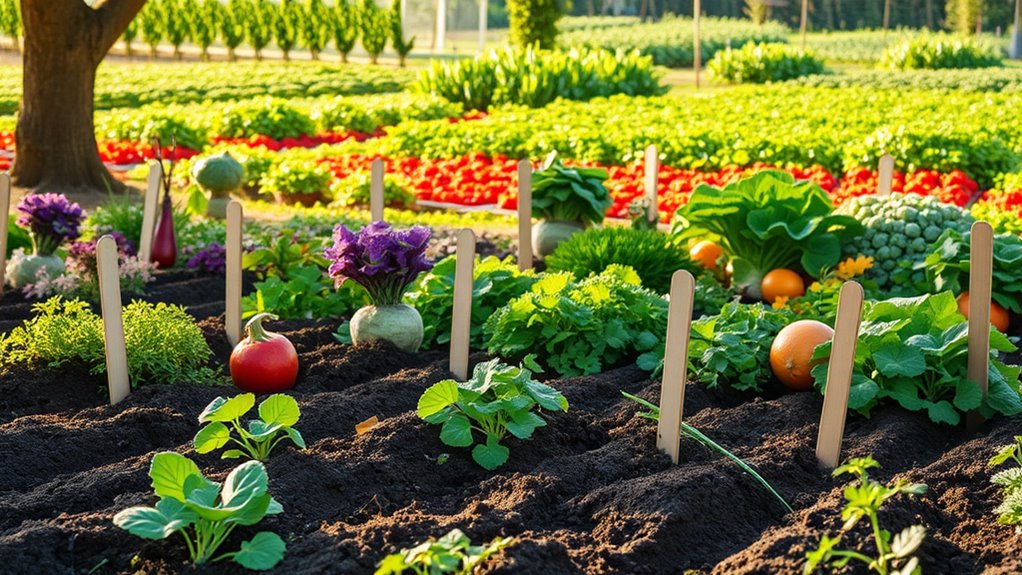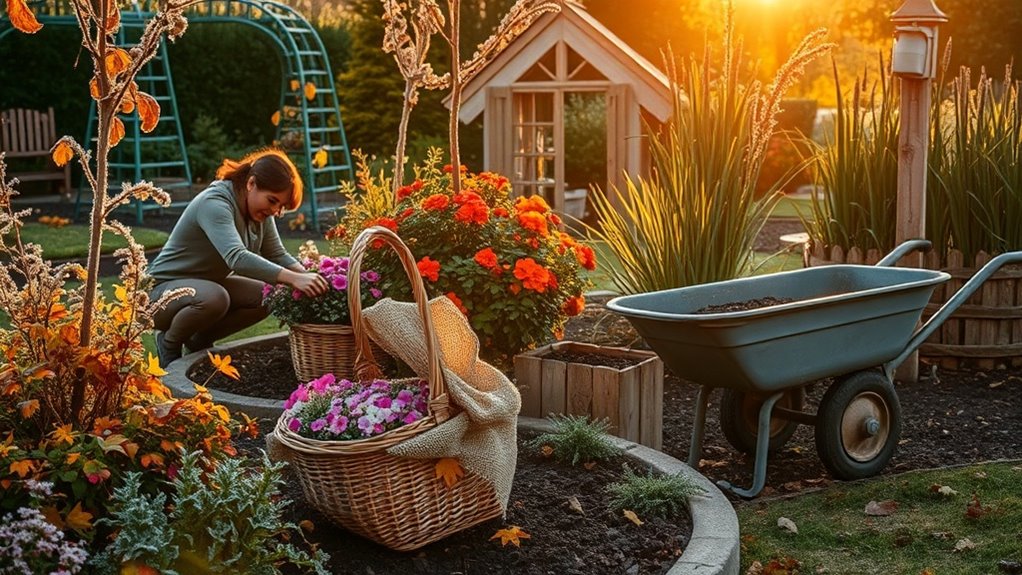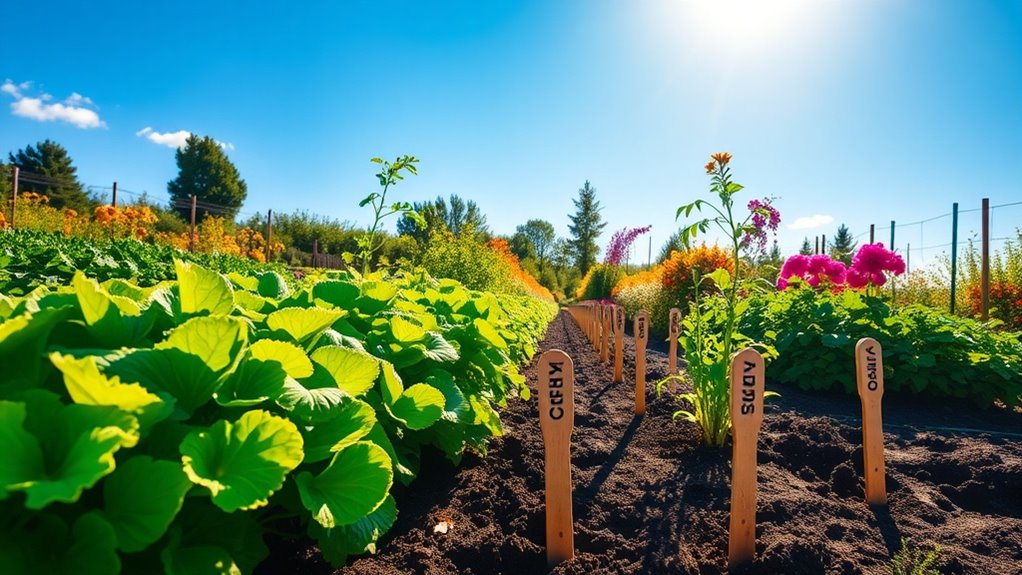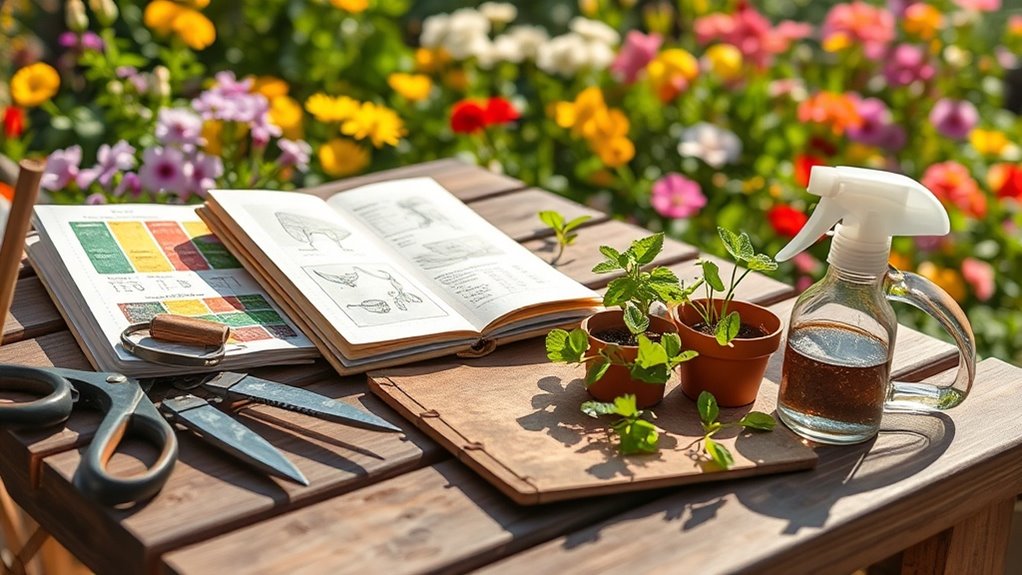The Best Times to Plant for a Year-Round Harvest
To achieve a year-round harvest, it’s key to understand your growing zone’s climate. In spring, plant early vegetables and herbs like peas and cilantro. In summer, focus on warm-weather crops such as tomatoes and zucchini. As fall approaches, sow cool-weather varieties like kale and spinach. Winter’s a great time for indoor gardening with plants like basil. Mastering these seasonal strategies can help maximize your harvest, and there’s even more to explore on optimizing your garden.
Understanding Your Growing Zone
How well do you know your growing zone?
Understanding it’s essential for creating a successful planting schedule.
Each zone has unique climate conditions, which influence what you can grow and when to plant.
To find your zone, consult the USDA Plant Hardiness Zone Map, which divides the U.S. into areas based on temperature.
Once you know your zone, you can plan your garden more effectively, selecting plants suited to your local climate.
This knowledge helps you maximize your harvest and guarantees you plant at the right times, avoiding frost and other weather-related setbacks. Additionally, implementing seasonal strategies can help ensure your garden remains vibrant year-round.
Start planning today for a thriving garden!
Spring Planting: Early Vegetables and Herbs
As you prepare for spring planting, consider starting with early vegetables and herbs that thrive in cooler temperatures.
Opt for crops like peas, lettuce, spinach, and radishes, which can be sown as soon as the soil is workable.
Herbs such as parsley, cilantro, and chives also flourish in these conditions.
Make sure to check your local frost dates to guarantee a successful start.
Planting these varieties not only maximizes your harvest but also gives you fresh produce to enjoy earlier in the season.
Additionally, understanding herb timing can significantly enhance the flavor profile of your culinary herbs throughout the growing season.
Keep the soil moist and monitor for pests as your garden begins to grow.
Happy planting!
Summer Planting: Mid-Season Crops
Once you’ve enjoyed the early spring harvest, it’s time to shift your focus to mid-season crops that thrive in the warm summer months.
These crops not only provide sustenance but also add vibrancy to your garden.
Consider planting:
- Tomatoes – Juicy and versatile for countless dishes.
- Zucchini – Prolific producers that can be grilled or baked.
- Peppers – Brighten your meals with their flavor and color.
- Cucumbers – Crisp in salads or as crunchy snacks.
Additionally, balcony tomato gardening allows you to grow these delicious fruits even in limited spaces, maximizing your summer harvest.
Fall Planting: Cool-Weather Varieties
Fall planting offers a unique opportunity to cultivate cool-weather varieties that thrive in the crisp autumn air.
As temperatures drop, consider sowing seeds for crops like kale, spinach, and radishes. These plants enjoy the chill and can even become sweeter after a frost. Additionally, fall gardening allows you to take advantage of ideal soil conditions that are often more favorable than in the summer months.
Make sure you prepare your soil well by adding compost for nutrients. It’s also important to check your local frost dates, as you’ll want to plant in time for a successful harvest.
Water your seedlings regularly, and consider using row covers to protect them from unexpected cold snaps. With the right care, you’ll enjoy fresh produce well into winter.
Winter Preparation: Indoor Gardening and Overwintering Techniques
After enjoying the bounty from your fall crops, it’s time to think about how to keep your gardening spirit alive during winter.
Indoor gardening and overwintering techniques can help you stay engaged and reap rewards.
Here are some tips to keep in mind:
- Choose the right plants: Opt for herbs and greens that thrive indoors, like basil and spinach.
- Use grow lights: Supplement natural light to promote healthy growth.
- Maintain humidity: Keep your indoor environment moist with a humidifier.
- Rotate your plants: Regularly turn pots for even light exposure.
Additionally, growing fresh herbs indoors can provide flavorful additions to your meals year-round.
With these strategies, you’ll keep your green thumb active all winter long!





